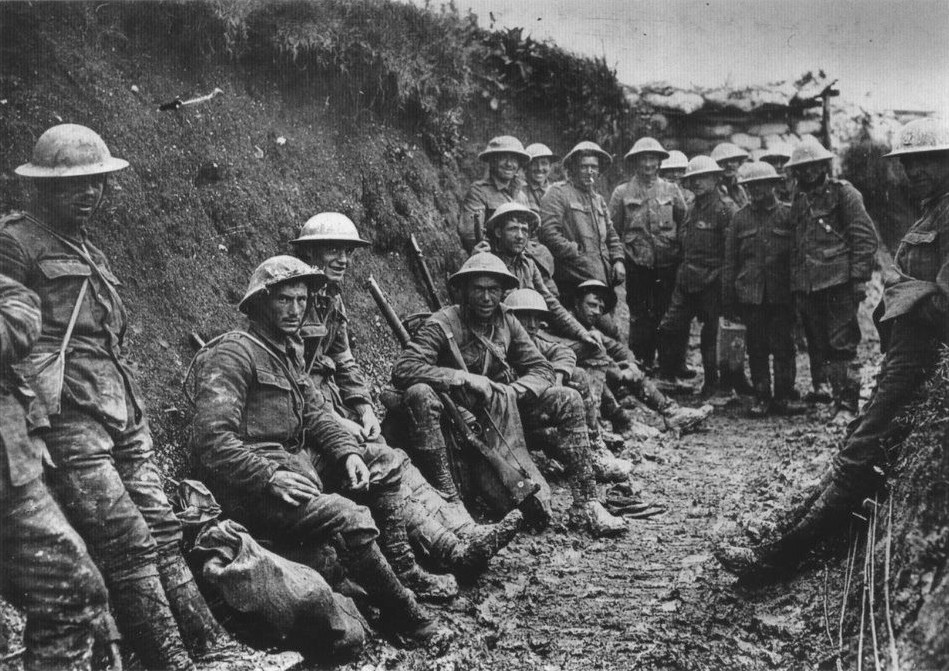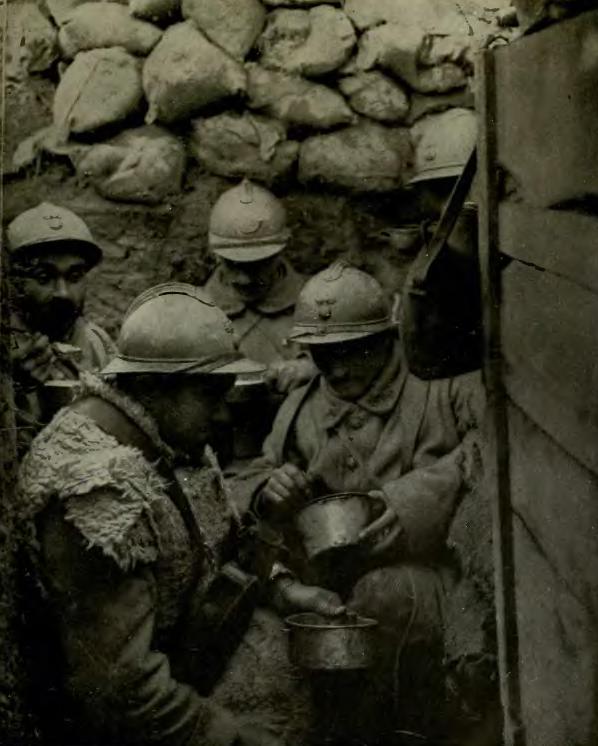|
Doughboy
Doughboy was a popular nickname for the American infantryman during World War I. Though the origins of the term are not certain, the nickname was still in use as of the early 1940s. Examples include the 1942 song "Johnny Doughboy Found a Rose in Ireland", recorded by Dennis Day, Kenny Baker, and Kay Kyser, among others, the 1942 musical film ''Johnny Doughboy'', and the character "Johnny Doughboy" in ''Military Comics''. It was gradually replaced during World War II by "G.I." Etymology The origins of the term are unclear. The word was in wide circulation a century earlier in both Britain and America, albeit with different meanings. Horatio Nelson's sailors and the Duke of Wellington's soldiers in Spain, for instance, were both familiar with fried flour dumplings called "doughboys",Evans, Ivor H. (ed.) (1981) ''Brewer's Dictionary of Phrase and Fable'' New York: Harper & Row, p.353 the precursor of the modern doughnut. Independently, in the United States, the term had come to ... [...More Info...] [...Related Items...] OR: [Wikipedia] [Google] [Baidu] |
Spirit Of The American Doughboy
''The Spirit of the American Doughboy'' is a pressed copper sculpture by E. M. Viquesney, designed to honor the veterans and casualties of World War I. Mass-produced during the 1920s and 1930s for communities throughout the United States, the statue's design was the most popular of its kind, spawning a wave of collectible miniatures and related memorabilia as well as numerous copies by other artists. Its title is often shortened to ''The Doughboy''. Memorials The statue depicts a doughboy walking through shattered tree stumps strung with barbed wire, his rifle in his left hand and his right hand held high above his head, clutching a hand grenade. The aggressive design and affordability of the statue made it extremely popular, and more than 150 copies of it were created for municipal memorials across the nation. The Smithsonian American Art Museum currently lists 159 locations. Of that number, 134 currently existing originals have been independently authenticated, and several ha ... [...More Info...] [...Related Items...] OR: [Wikipedia] [Google] [Baidu] |
Johnny Doughboy
''Johnny Doughboy'' is a 1942 American black-and-white musical comedy film directed by John H. Auer for Republic Pictures. It stars Jane Withers in a dual role as a 16-year-old actress who is sick of playing juvenile roles, and her lookalike fan who is persuaded by a group of "has-been" child stars to perform with them in a U.S. troop show. The film features cameos by ex-child stars Bobby Breen, Carl "Alfalfa" Switzer, George "Spanky" McFarland, Baby Sandy, and others. It received an Academy Award nomination for Best Musical Score. Plot Sixteen-year-old film star Ann Winters is sick of playing juvenile roles and decides to run away for a vacation, to the consternation of her manager, Harry Fabian, who has just arranged for her to play a 12-year-old in ''Ann of Honeysuckle Farm''. As soon as Ann drives off, Penelope Ryan, president of the Ann Winters fan club back in Oriole, Nebraska, arrives for a two-week stay as the winner of a lookalike contest that Harry dreamed up. Though ... [...More Info...] [...Related Items...] OR: [Wikipedia] [Google] [Baidu] |
WWI Doughboy
World War I (28 July 1914 11 November 1918), often abbreviated as WWI, was one of the deadliest global conflicts in history. Belligerents included much of Europe, the Russian Empire, the United States, and the Ottoman Empire, with fighting occurring throughout Europe, the Middle East, Africa, the Pacific, and parts of Asia. An estimated 9 million soldiers were killed in combat, plus another 23 million wounded, while 5 million civilians died as a result of military action, hunger, and disease. Millions more died in genocides within the Ottoman Empire and in the 1918 influenza pandemic, which was exacerbated by the movement of combatants during the war. Prior to 1914, the European great powers were divided between the Triple Entente (comprising France, Russia, and Britain) and the Triple Alliance (containing Germany, Austria-Hungary, and Italy). Tensions in the Balkans came to a head on 28 June 1914, following the assassination of Archduke Franz Ferdina ... [...More Info...] [...Related Items...] OR: [Wikipedia] [Google] [Baidu] |
Tommy Atkins
Tommy Atkins (often just Tommy) is slang for a common soldier in the British Army. It was certainly well established during the nineteenth century, but is particularly associated with the First World War. It can be used as a term of reference, or as a form of address. German soldiers would call out to "Tommy" across no man's land if they wished to speak to a British soldier. French and Commonwealth troops would also call British soldiers "Tommies". In more recent times, the term Tommy Atkins has been used less frequently, although the name "Tom" is occasionally still heard; private soldiers in the British Army's Parachute Regiment are still referred to as "Toms". Etymology ''Tommy Atkins'' or ''Thomas Atkins'' has been used as a generic name for a common British soldier for many years. The origin of the term is a subject of debate, but it is known to have been used as early as 1743. A letter sent from Jamaica about a mutiny amongst the troops says "except for those from ... [...More Info...] [...Related Items...] OR: [Wikipedia] [Google] [Baidu] |
Poilu
Poilu (; ) is an informal term for a late 18th century–early 20th century French infantryman, meaning, literally, ''the hairy one''. It is still widely used as a term of endearment for the French infantry of World War I. The word carries the sense of the infantryman's typically rustic, agricultural background, and derives from the bushy moustaches and other facial hair affected by many French soldiers after the outbreak of the war as a sign of masculinity. The poilu was particularly known for his love of pinard, his ration of cheap wine. The image of the dogged, bearded French soldier was widely used in propaganda and war memorials. The stereotype of the Poilu was of bravery and endurance, but not always of unquestioning obedience. At the disastrous Chemin des Dames offensive of 1917 under General Robert Nivelle, they were said to have gone into no man's land making baa'ing noises—a collective bit of gallows humour signalling the idea that they were being sent as lambs ... [...More Info...] [...Related Items...] OR: [Wikipedia] [Google] [Baidu] |
Digger (soldier)
Digger is a military slang term for primarily infantry soldiers from Australia and New Zealand. Evidence of its use has been found in those countries as early as the 1850s, but its current usage in a military context did not become prominent until World War I, when Australian and New Zealand troops began using it on the Western Front (World War I), Western Front around 1916–17. Evolving out of its usage during the war, the term has been linked to the concept of the Anzac spirit, Anzac legend, but within a wider social context, it is linked to the concept of "egalitarianism, egalitarian mateship". Origin Before World War I, the term "digger" was widely used in Australasia to mean a mining, miner, and also referred to a Kauri gum-digger in New Zealand. In Australia and New Zealand, the term "digger" has egalitarian connotations from the Victoria (Australia), Victorian Eureka Rebellion, Eureka Stockade Rebellion of 1854, and was closely associated with the principles of mate ... [...More Info...] [...Related Items...] OR: [Wikipedia] [Google] [Baidu] |
Salvation Army
Salvation (from Latin: ''salvatio'', from ''salva'', 'safe, saved') is the state of being saved or protected from harm or a dire situation. In religion and theology, ''salvation'' generally refers to the deliverance of the soul from sin and its consequences."Salvation." ''Oxford English Dictionary'' (2nd ed.). Oxford University Press. 1989. "The saving of the soul; the deliverance from sin and its consequences." The academic study of salvation is called ''soteriology''. Meaning In Abrahamic religions and theology, ''salvation'' is the saving of the soul from sin and its consequences. It may also be called ''deliverance'' or ''redemption'' from sin and its effects. Depending on the religion or even denomination, salvation is considered to be caused either only by the grace of God (i.e. unmerited and unearned), or by faith, good deeds (works), or a combination thereof. Religions often emphasize that man is a sinner by nature and that the penalty of sin is death (physical death, ... [...More Info...] [...Related Items...] OR: [Wikipedia] [Google] [Baidu] |
Field Ration
A field ration (combat ration, ration pack, or food packet) is a type of prepackaged or canned military ration. Field rations are distinguished from garrison rations by virtue of being designed for minimal preparation in the field, as well as for long shelf life. They contain canned, vacuum-sealed, pre-cooked or freeze-dried foods, powdered beverage mixes or concentrated food bars. Many field rations contain meat as one of their main courses, but countries such as the United States offer vegetarian options as well. A WWI term, the "iron ration" is a soldier's dry emergency rations. The term ''MRE'' is sometimes used synonymously with ''field ration'' but it more accurately describes a specific type from the United States. Most armed forces in the world today now field some form of pre-packaged combat ration, often suitably tailored to meet national or regional cuisines. Such meals used for field rations also prove invaluable for disaster or wartime relief, where large sto ... [...More Info...] [...Related Items...] OR: [Wikipedia] [Google] [Baidu] |
Adobe
Adobe ( ; ) is a building material made from earth and organic materials. is Spanish for ''mudbrick''. In some English-speaking regions of Spanish heritage, such as the Southwestern United States, the term is used to refer to any kind of earthen construction, or various architectural styles like Pueblo Revival or Territorial Revival. Most adobe buildings are similar in appearance to cob and rammed earth buildings. Adobe is among the earliest building materials, and is used throughout the world. Adobe architecture has been dated to before 5,100 B.C. Description Adobe bricks are rectangular prisms small enough that they can quickly air dry individually without cracking. They can be subsequently assembled, with the application of adobe mud to bond the individual bricks into a structure. There is no standard size, with substantial variations over the years and in different regions. In some areas a popular size measured weighing about ; in other contexts the size is weighi ... [...More Info...] [...Related Items...] OR: [Wikipedia] [Google] [Baidu] |
Dough
Dough is a thick, malleable, sometimes elastic paste made from grains or from leguminous or chestnut crops. Dough is typically made by mixing flour with a small amount of water or other liquid and sometimes includes yeast or other leavening agents, as well as ingredients such as fats or flavorings. Making and shaping dough begins the preparation of a wide variety of foodstuffs, particularly breads and bread-based items, but also including biscuits, cakes, cookies, dumplings, flatbreads, noodles, pasta, pastry, pizza, piecrusts, and similar items. Dough can be made from a wide variety of flour, commonly wheat and rye but also maize, rice, legumes, almonds, and other cereals or crops. Types of dough Doughs vary widely depending on ingredients, the desired end product, the leavening agent (particularly whether the dough is based on yeast or not), how the dough is mixed (whether quickly mixed or kneaded and left to rise), and cooking or baking technique. There is no formal ... [...More Info...] [...Related Items...] OR: [Wikipedia] [Google] [Baidu] |
Mexico
Mexico (Spanish: México), officially the United Mexican States, is a country in the southern portion of North America. It is bordered to the north by the United States; to the south and west by the Pacific Ocean; to the southeast by Guatemala, Belize, and the Caribbean Sea; and to the east by the Gulf of Mexico. Mexico covers ,Mexico ''''. . making it the world's 13th-largest country by are ... [...More Info...] [...Related Items...] OR: [Wikipedia] [Google] [Baidu] |


.jpg)


.jpg)

_1.jpg)
